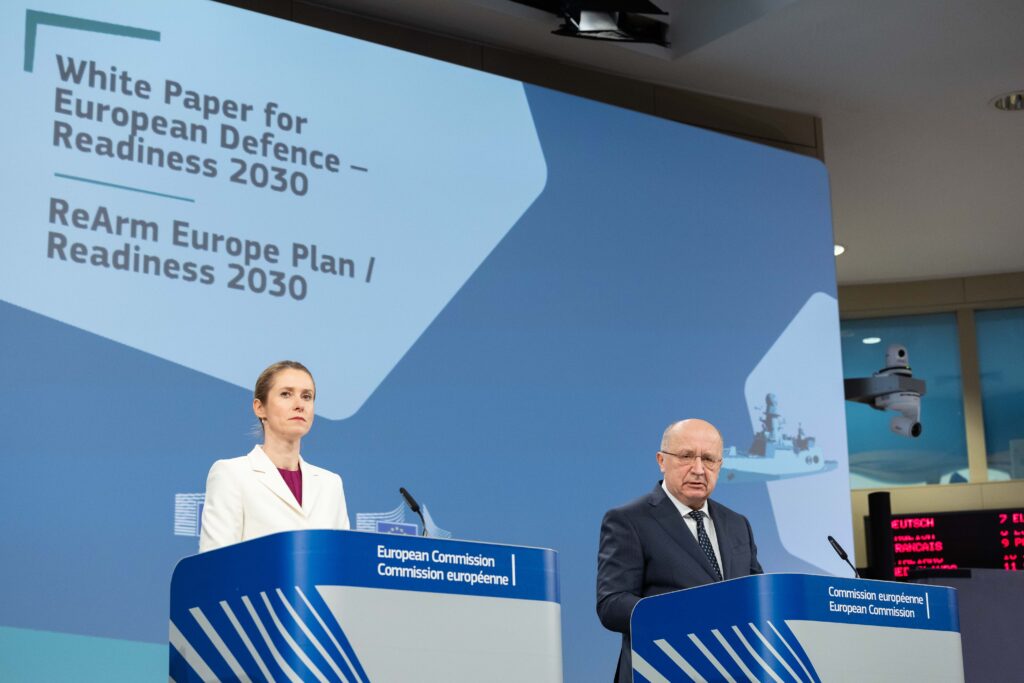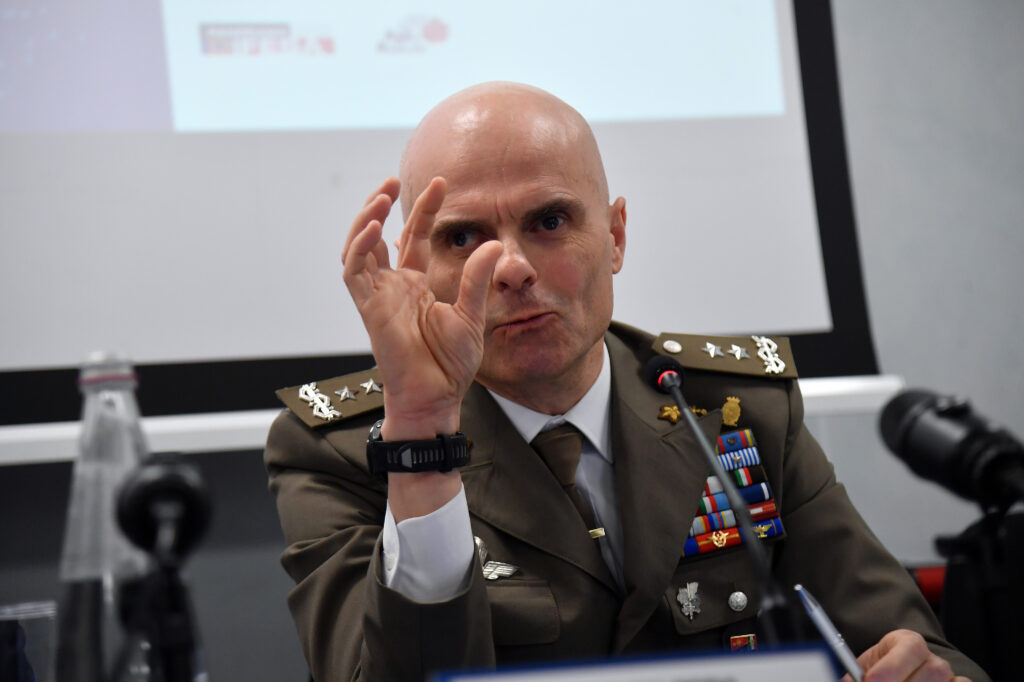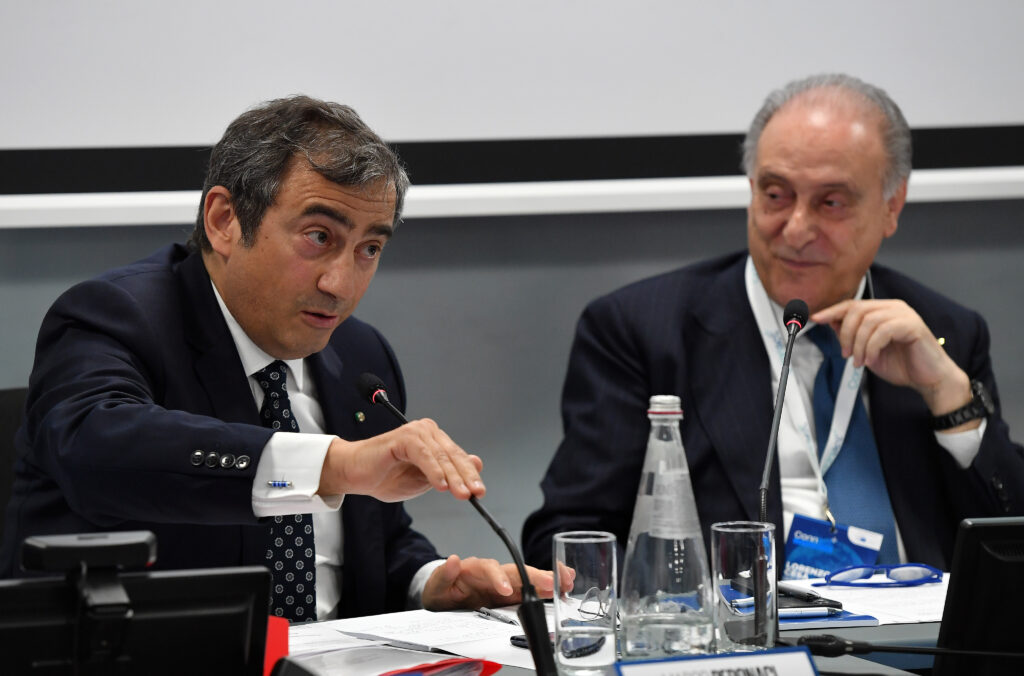Brussels – The EU’s Rearm Europe plan, along with a complex geopolitical framework that moves between wars and tariffs, brings out the need to confront and discuss the topic of common defence. The Connact Defence & Security 2025 event, titled “Common European Defence: Financing and Industrial Integration,” organized today (April 15) in Rome by ConnAct, the events platform that fosters discussion between private actors and institutions through moments of meeting and networking, is precisely a space for discussion in this sense.
During the first panel, titled “European Plan and White Paper for EU Defence: A New Dimension for Europe,” the discussion focused on recent EU defence and security initiatives—namely the White Paper on Defence, penned by Kaja Kallas (High Representative for Foreign Policy) and Andrius Kubilius (Commissioner for Defence), the ReArm Europe plan of Ursula von der Leyen, and the broader Readiness 2030 strategy—as well as on synergies between the European and NATO levels, to strengthen the transatlantic partnership.

Taking the floor first was Anne Fort, Kubilius’ deputy chief of staff, to emphasize how the white paper is, in fact, “a call to collective action” for the Twenty-Seven that focuses on the “sense of urgency” of today’s challenges. The text, Fort points out, focuses on the need to “invest heavily and strengthen our capabilities” in several areas but always pointing to the added value provided by cooperation between the chancelleries: we are talking about, among other things, collaborative investment, joint procurement, interoperability of armed forces, and joint projects on strategic enablers.
Another key issue is that of industry. The problem here is that the market is fragmented. We need to strengthen the European industrial base by aggregating demand, simplifying the regulatory ecosystem, supporting investment, including through the EU budget, and integrating innovative technologies. In this regard, Fort says, it is important to clarify the role of the Union. “There is no competition between the EU and NATO” but complementarity, the official reiterates: Brussels must “support member states throughout the entire strategic capability development cycle” to “make them reliable partners within the Alliance.”
For General Domenico Ciotti (director of the National Armaments Directorate’s IV Department of Armaments Program Coordination), it is important that the time horizon embraced by decision makers is medium to long term “to allow for proper planning and also to allow companies to invest in both technology and skills.” The issue that needs to be explored further, he argues, is that of “maturation states“: a continuous updating of strategic practices to remain abreast of “the constant and rapid evolution of threats and technologies” (such as cyber and artificial intelligence systems).

In addition to this, adds the general, “a culture of security is built every day,” and even the uninitiated must become familiar with the twin concepts of “threat” and “vulnerability” because they permeate people’s daily lives. Crucial, then, is working on “awareness of the risks to which we are constantly exposed,” which is then what makes the European Commission with its strategy on preparedness.
Ambassador Marco Peronaci, Italy’s permanent representative to the Alliance, whose speech revolved around three levels, also returned on the complementarity between NATO and EU structures. The first level is the transatlantic bond, which remains the “essential foundation of collective security and identity” of the West in the short term. To keep it alive and functional, he argues, it is necessary for “the EU to work with NATO to increase the industrial-technological base” and for the Old Continent not to duplicate the efforts carried out by the Alliance.
To build the “European defence pillar in the medium to long term” (second level), the EU can start by implementing the planning decided in NATO, with a focus on the so-called capability targets to develop “strategic deterrence and industrial capabilities” on both sides of the Atlantic. The challenge is not to fray the Alliance further, avoiding political divides that only play into the hands of autocracies. The third level is that of Italy, which must play a role as a “bridge” between Europe and the United States: that is, he says, precisely what Premier Giorgia Meloni is preparing to do during her visit to Washington the day after tomorrow.
EU-NATO relations are, after all, a theme dear to several panellists. Among them, Admiral Dario Giacomin (Italian military representative to the NATO and EU Military Committees) recalls the importance of a “cultural operation” of mutual recognition between the decision-makers of the two organizations, who are in fact “learning to collaborate” after decades in which their respective systems had operated separately. Collaboration, he says, is already “at a very advanced stage in supporting Ukraine, which is the first front in European defence.”

For Giacomin, there are three aspects to focus on in Brussels. To begin with, the “clear enunciation of the capability gaps” to figure out where and how to direct efforts: “There is a lot to be done, and member states cannot do it alone,” he explains. Then, we must decide “who does what” and divide tasks between chancelleries and community bodies, including “streamlining bureaucracy” when needed. Third, invest heavily in technological innovation because “the West will maintain its deterrence only if it stays ahead of the curve.”
Lorenzo Cesa, MP and Italian head of delegation to the NATO Parliamentary Assembly, finally addressed the need for “politics to speak a language of truth to the people.” Starting from the cornerstones of our national foreign policy (Atlanticism and Europeanism), he said, “we must bridge Europe and the United States” by taking advantage of the “extraordinary” relationship with the Washington delegation. “There is a desire for cooperation,” certifies Cesa, according to whom the only request, a legitimate one, made by Uncle Sam is that “we take more charge of our defence even from the point of view of military spending.”
He argues that to maintain credibility within NATO, the target of 2 per cent of GDP in defence must be met and perhaps even exceeded. To do this, we must “use the resources the EU makes available to us”through the ReArm Europe plan. The message to government allies is simple: “Not taking advantage of this opportunity would be a huge mistake” because “the challenges are enormous and the Alliance will grow stronger and stronger,” so everyone needs to play their part.
English version by the Translation Service of Withub





